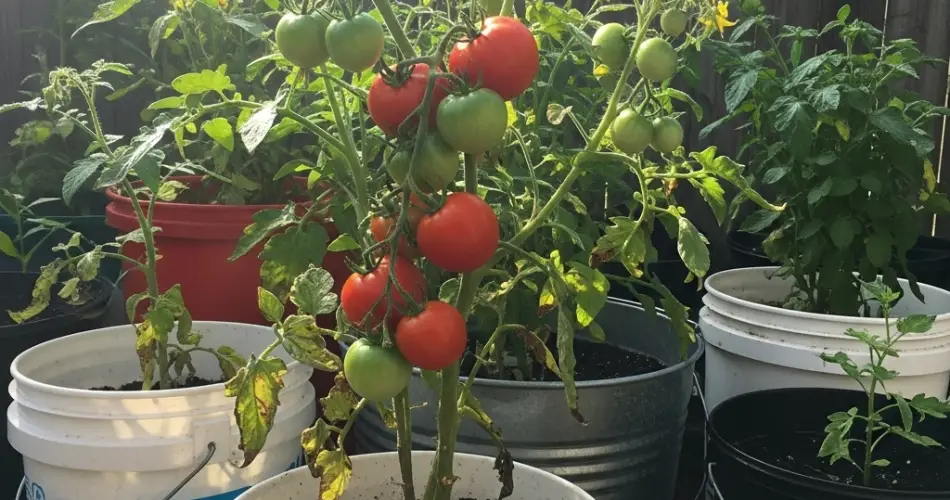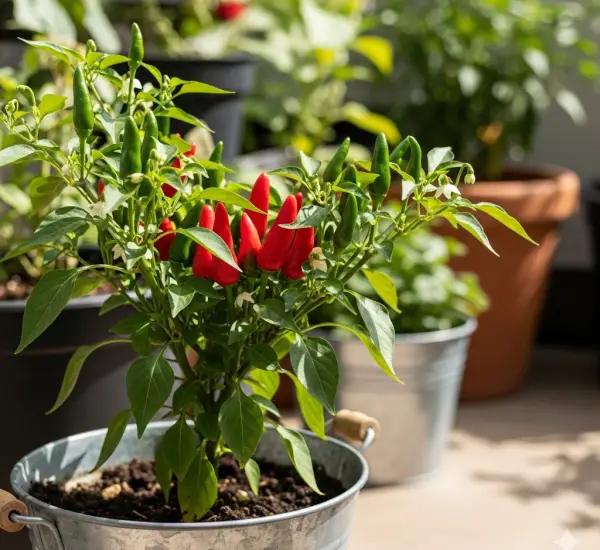Tomatoes are a staple in kitchens around the world, prized for their flavor, versatility, and nutritional value. From fresh salads to sauces and salsas, tomatoes bring color and taste to countless dishes. While many assume that growing tomatoes requires a large garden, they actually thrive in containers, particularly buckets. With the right techniques, you can enjoy a continuous harvest of fresh, juicy tomatoes right from your balcony, patio, or small urban garden. This guide will walk you through how to grow tomatoes successfully in bucket gardens and maintain a steady supply throughout the season.
Why Choose Bucket Gardening for Tomatoes
Bucket gardening is perfect for tomato cultivation for several reasons:
-
Space-saving: Buckets allow urban gardeners to grow tomatoes without needing a large plot of land.
-
Soil control: Container gardening ensures the right soil mix, which is critical for healthy growth and fruiting.
-
Mobility: Buckets can be moved to capture optimal sunlight or protect plants from extreme weather.
-
Pest management: Elevated containers reduce the risk of soil-borne pests and diseases.
For beginners and experienced gardeners alike, bucket gardening offers a practical, productive way to grow tomatoes in limited spaces.
Selecting the Right Bucket
Tomatoes need containers that provide enough space for root development. A standard 5-gallon bucket is suitable for smaller varieties, while larger determinate or indeterminate types benefit from 10–15 gallon containers.
Ensure your buckets have adequate drainage holes to prevent waterlogging, which can cause root rot and stunt growth. Plastic, wooden, or fabric containers all work well, as long as they are durable and allow water to drain freely.
Choosing Tomato Varieties
For continuous harvest in buckets, it’s important to select the right variety:
-
Indeterminate tomatoes: These vining types produce fruit continuously throughout the season. Examples include ‘Cherry,’ ‘Sungold,’ and ‘Beefsteak.’
-
Determinate tomatoes: These bush varieties produce all their fruit within a short window. They are suitable for gardeners who prefer a single large harvest.
Indeterminate varieties are ideal for bucket gardens focused on continuous harvest, while determinate types are perfect if you plan to harvest a batch at once for canning or cooking.
Soil Preparation
Tomatoes require nutrient-rich, well-draining soil. A healthy mix includes:
-
1 part high-quality potting soil
-
1 part compost or well-rotted manure
-
1 part perlite or coarse sand for drainage
The soil should be slightly acidic to neutral, with a pH of 6.0–7.0. Fertile, loose soil ensures healthy root development and supports long-lasting fruit production.
Planting Tomatoes in Buckets
Tomatoes can be started from seeds indoors or purchased as seedlings. When planting in buckets:
-
Fill the bucket with 4–6 inches of prepared soil.
-
Dig a hole deep enough to bury two-thirds of the tomato plant, including the lower leaves. Tomatoes develop additional roots along buried stems, which strengthens the plant.
-
Place the plant in the hole and fill it with soil, gently firming it around the stem.
-
Water thoroughly to settle the soil.
For continuous harvest, consider staggered planting: start a few seedlings every 2–3 weeks to ensure new flowers and fruit develop throughout the season.
Supporting Your Plants
Indeterminate tomatoes require support to keep vines off the ground. Use stakes, cages, or trellises attached to the bucket. Proper support promotes airflow, reduces disease risk, and makes harvesting easier.
Watering and Fertilization
Tomatoes need consistent moisture, especially when flowers and fruit are developing. Water deeply whenever the top inch of soil feels dry, ensuring even moisture throughout the bucket. Avoid wetting the leaves to reduce fungal problems.
Fertilize every 2–3 weeks with a balanced, slow-release fertilizer or liquid feed. Tomato-specific fertilizers high in phosphorus and potassium support flowering and fruiting while preventing excessive leafy growth.
Sunlight Requirements
Tomatoes thrive in full sun, requiring at least 6–8 hours of direct sunlight daily. Place your buckets in the brightest spot available. In hot climates, partial afternoon shade can prevent heat stress.
Pests and Disease Management
Container-grown tomatoes are less prone to soil-borne issues, but pests like aphids, whiteflies, or spider mites may appear. Inspect plants regularly and treat with organic options such as neem oil or insecticidal soap. Good airflow and proper watering prevent fungal infections such as powdery mildew.
Harvesting Tomatoes
The key to continuous harvest is regular picking. Harvest tomatoes when they reach full color and slightly soft texture. Frequent picking encourages plants to produce more flowers and fruit. Indeterminate varieties, in particular, can provide fresh tomatoes over several months with consistent care.
Conclusion
Bucket gardening is an efficient, space-saving way to grow tomatoes, providing a continuous supply of fresh, flavorful fruit. By choosing the right container, selecting indeterminate varieties, using nutrient-rich soil, and providing consistent care, urban gardeners can enjoy delicious tomatoes throughout the season. With careful attention to watering, fertilization, and support, bucket-grown tomatoes can rival traditional garden crops, making fresh, homegrown produce accessible even in limited spaces.



